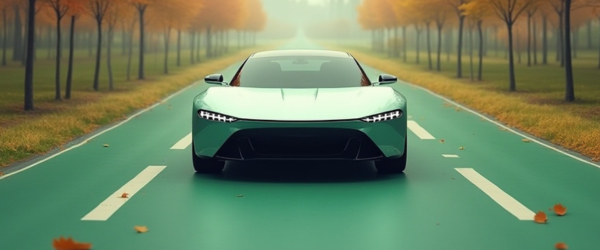Importance of Eco-Friendly Vehicles: Benefits, Impact, and Future of Green Transportation

A Silent Revolution on Wheels
India, long known for its bustling roads and fuel-guzzling traffic, is experiencing a tectonic shift in how it moves. From Delhi to Coimbatore, from IT parks to family homes, a growing number of Indians are making the switch to cleaner, greener modes of transport. The rise of eco-friendly vehicles in India—primarily electric vehicles (EVs), CNG cars, and hybrids—is not just a trend. It’s a transition that’s being driven by policy, price-consciousness, pollution concerns, and a generational shift in how we view the planet.
The question is no longer if India will embrace sustainable mobility—it’s how fast.
The Big Three: EVs, CNG, and Hybrids
Before diving into the market stats and policies, let’s understand what we mean by “eco-friendly vehicles.”
- Electric Vehicles (EVs):
EVs run entirely on electric power and produce zero tailpipe emissions. India has seen a surge in EV adoption, especially in the two-wheeler and fleet segments. - CNG Vehicles:
Compressed Natural Gas (CNG) vehicles emit significantly fewer pollutants than petrol or diesel. They’re cost-effective and widely used by cabs and middle-class families. - Hybrid Vehicles:
These use a mix of traditional internal combustion engines and electric propulsion. They offer better fuel efficiency and reduced emissions, even if they’re not fully electric.
Why the Shift? The Driving Forces Behind Green Mobility
1. Air Pollution Crisis
With cities like Delhi frequently topping the global air pollution charts, cleaner mobility is a necessity. Vehicular emissions are one of the largest contributors to PM2.5 levels in urban India. Eco-friendly vehicles help tackle this crisis head-on.
2. Soaring Fuel Prices
Petrol and diesel prices have crossed ₹100 per litre in many states. In contrast, charging an EV or filling up on CNG costs significantly less per kilometre. For the average Indian commuter, this savings adds up fast.
3. Government Push
From the Faster Adoption and Manufacturing of Hybrid and Electric Vehicles (FAME) schemes to state-level incentives, the government is pulling multiple levers to boost adoption:
- Subsidies on EVs
- Reduced GST (5% on EVs vs. 28% on petrol/diesel vehicles)
- Road tax exemptions
- Dedicated EV policies in states like Delhi, Maharashtra, Tamil Nadu, and Gujarat
4. Changing Mindsets
Today’s buyers, especially Gen Z and millennials, are environmentally conscious. Owning a green vehicle is seen not just as a smart financial decision, but also as a responsible one.
Numbers Don’t Lie: The Growth of Eco-Friendly Vehicles in India
- Electric 2-Wheelers:
In 2024 alone, over 1 million electric two-wheelers were sold—a record number. Brands like Ola Electric, Ather, and TVS are dominating this segment. - Electric 4-Wheelers:
Tata Motors leads the EV car market with over 80% market share, thanks to affordable models like the Nexon EV and Tiago EV. MG and Hyundai are also expanding their offerings. - CNG Adoption:
Maruti Suzuki, India’s largest carmaker, now offers over 14 CNG models. CNG car sales grew over 40% year-on-year in 2023. - Hybrid Vehicles:
While still niche, hybrids are gaining traction. Toyota’s Innova HyCross and the Grand Vitara hybrid have brought the segment into the mainstream.
City by City: Where the Revolution Is Taking Place
- Delhi:
With the most aggressive EV policy in the country, Delhi offers incentives on both two- and four-wheelers. Even auto-rickshaws are going electric. - Bangalore:
Home to the most number of EV charging stations in the country, the IT capital is a hotspot for electric mobility innovation. - Mumbai & Pune:
Maharashtra’s strong state policy and investment in EV infrastructure have helped these cities emerge as early adopters. - Smaller Cities Rising:
Tier-2 cities like Lucknow, Nagpur, and Coimbatore are seeing strong uptake, particularly in the CNG and electric 2-wheeler segments.
The Challenges: Roadblocks to a Fully Green India
Despite the momentum, there are a few speed bumps on the road to sustainable mobility:
1. Charging Infrastructure
While cities are improving rapidly, rural and highway charging options are still limited. Range anxiety remains a concern for first-time EV buyers.
2. High Upfront Cost
Even with subsidies, EVs and hybrids often cost more upfront than their petrol counterparts. The long-term savings are clear, but not all consumers are convinced.
3. Battery Lifecycle and Recycling
As EV adoption increases, the issue of battery disposal and recycling becomes critical. India needs strong systems for end-of-life management.
4. Limited Model Options
Though the EV market is expanding, choices in the affordable segment are still limited. Consumers want more variety, especially in the under ₹10 lakh range.
Innovations & Startups: Driving India’s Green Future
India’s startup ecosystem is playing a key role in pushing eco-friendly vehicles into the mainstream:
- Battery Swapping:
Companies like Bounce and Sun Mobility are innovating with battery-swapping networks to reduce wait times and infrastructure strain. - EV Fleet Providers:
BluSmart and Zypp Electric are offering 100% electric ride-hailing and delivery fleets. - Charging Networks:
Startups like ChargeZone, Statiq, and Ionage are rapidly scaling public charging infrastructure across highways and city centers.
What’s Next: The Future of Eco-Friendly Vehicles in India
Here’s what we can expect in the coming years:
- More Affordable EVs:
Tata, Mahindra, and international brands are expected to launch EVs in the ₹6–9 lakh bracket. - Hydrogen Fuel Cell Vehicles:
Still in early stages, but India is exploring green hydrogen as an alternative clean fuel source. - Solar-Powered Mobility:
Pilot projects are underway to harness solar energy in public transportation. - Stricter Emission Norms:
With Bharat Stage VI norms already in place, India will continue tightening regulations to phase out polluting vehicles.
Tips for First-Time Buyers of Eco-Friendly Vehicles
- Assess your commute:
If you travel less than 100 km daily, an EV or hybrid can be a great fit. - Check charging infrastructure nearby:
Especially if you live in an apartment complex or a smaller town. - Do the math:
Calculate the Total Cost of Ownership (TCO) over 5 years. You’ll likely save money with a green vehicle. - Look for incentives:
State and central schemes can reduce your purchase cost by up to ₹1.5 lakhs. - Stay updated:
Battery tech, charging networks, and resale markets are evolving fast. Follow platforms like PlugInIndia and official government sites for updates.
The Road Ahead Is Green
India’s transition to eco-friendly vehicles isn’t just a policy decision—it’s a people-powered movement. From tech-savvy urbanites to budget-conscious families, Indians are embracing cleaner, smarter ways to travel. The rise of EVs, CNG, and hybrid cars is just the beginning. With ongoing innovation, policy support, and growing awareness, India is poised to become a global leader in sustainable mobility.
The future is not just about reaching your destination. It’s about getting there without costing the Earth.








